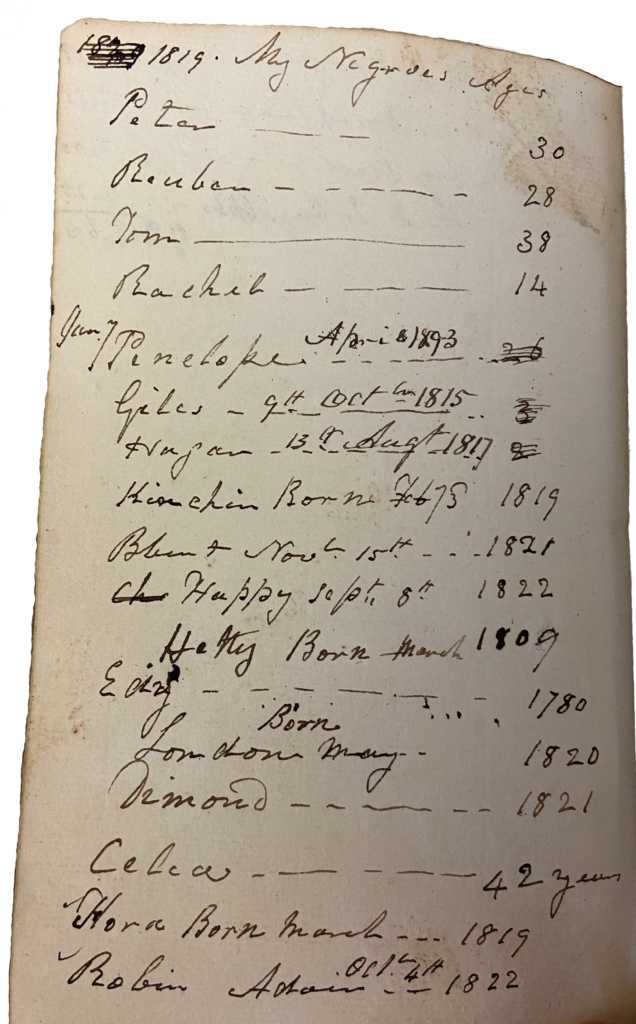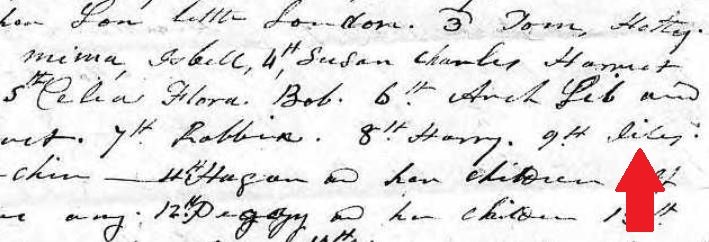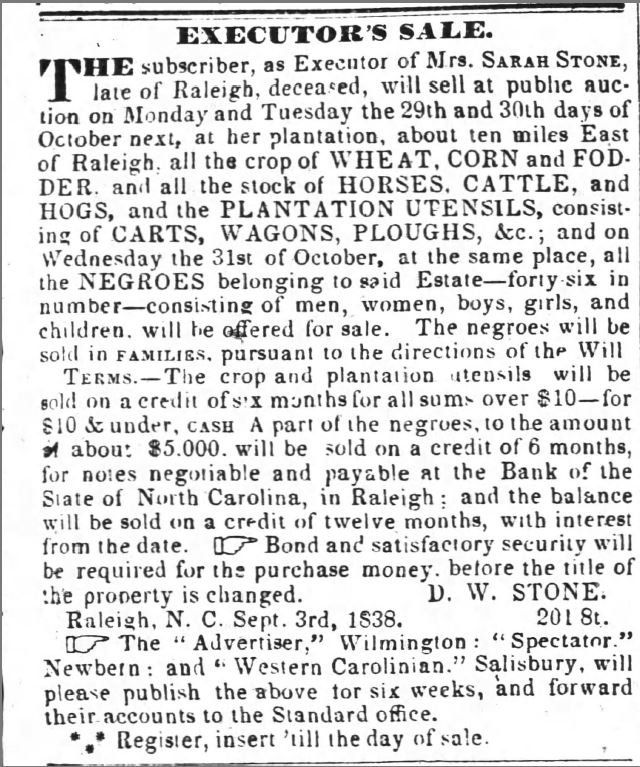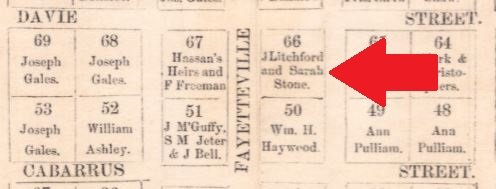
Giles Stone was born on October 9th, 1815. His enslaver Sarah Stone listed his birthday on an 1819 list found in her journal. In the 1834 Report of the Commissioners appointed to superintend the re-building of the State Capitol, Giles was listed as a “quarryman.” When he began working at the Capitol, he was about 18 years old.
The 1834 report indicated that Giles made 50 cents per day. He did not keep that money; his enslaver Sarah Stone signed for and kept the compensation that Giles earned. Sarah also enslaved Ceaser, Reuben and Robin and hired out all three men to construction at the Capitol.
Sarah Dashiell Stone was the second wife of David Stone, who served as Governor of North Carolina from 1808-1810. Following the death of his first wife in April 1816, David Stone married Sarah in June of 1817. The couple resided mostly at Restdale, the Stone plantation in Wake County, located ten miles from downtown Raleigh. After David Stone’s death in 1818, Sarah continued to live on the Stone property in Wake County. In 1830 she appeared on a list of absentee enslavers – with 41 enslaved people in Marks Creek District in Wake County. (For more on the topic of women enslavers) In 1834, she owned property along Fayetteville Street in Raleigh. It’s possible that Giles lived at this property or at Restdale, the Stone family plantation.
When Sarah Stone died in 1838, 46 of her enslaved people were sold at auction, in accordance with her will. Her will also stipulated that they be sold “as families,” saying, “I desire that they shall be sold in families that Husband and wife when I own both and their small children shall be put up together. They shall not be sold to speculators but to persons for their own use. I prefer this plan and I had rather that they should be sold together than to be separated far and wide by distributing them away.” Giles was one of the names mentioned in the will, along with Reuben, Penelope, Blount, Lucy, Ann, Ella and her son little London, Tom, Hetty, Isam, Mima, Isbell, Susan, Charles, Harriet, Arch, Celia, Flora, Bob, Arch, Lib, and Margaret, Robbin, Harry, Kinchin, Hagan and her children, Peggy and her children, Lib, Susan’s daughter Ginny, Holly’s daughter Phillis, Penelope’s daughter happy, Penelope’s daughter Ellen, Tenor, Prince, and Peter.
We don’t know for sure what happened to Giles after Sarah’s death, but there seems to be every indication that he was sold at auction at Restdale in 1838.



References:
- Census Of The United States, 1830-50, Record Group: Records of the Bureau of the Census, The National Archive, Washington, D.C.
- David Stone, Governor’s Papers, State Archives of North Carolina, Raleigh, North Carolina.
- Plan of the city of Raleigh first published in the year 1834. Map printed by Walters, Hughes and Company, Raleigh, N.C. From the book, Early Times in Raleigh Addresses Delivered by the Hon. David L. Swain, 1867. Accessed in the Raleigh History Collection, State Archives of North Carolina.
- The Raleigh Weekly Standard (Raleigh, North Carolina), October 3rd, 1838.
- Report of the commissioners appointed to superintend the re-building of the State Capitol. Philo White, Printer to the State, Legislature of North Carolina, 1834. Accessed in the Raleigh History Collection, State Archives of North Carolina.
- Sarah Stone, Wills and Estate Papers (Wake County). State Archives of North Carolina.
- Shaffer’s outline map of the city of Raleigh, N.C. 1888. Accessed in the Raleigh History Collection, State Archives of North Carolina.
- State Capitol Construction Records, Treasurer’s and Comptroller’s Papers, State Archives of North Carolina, Raleigh, North Carolina.




